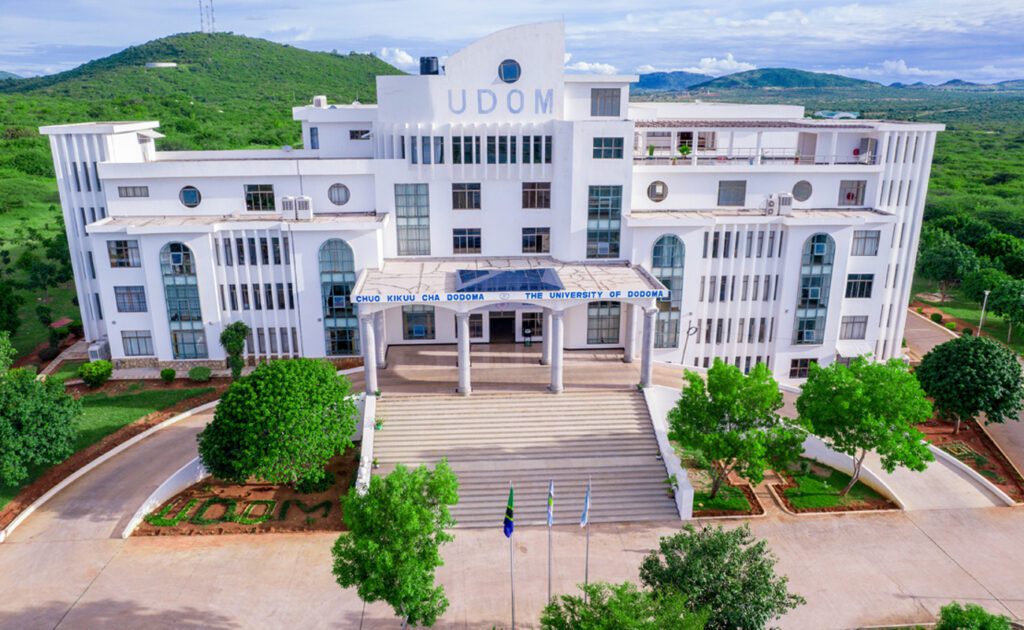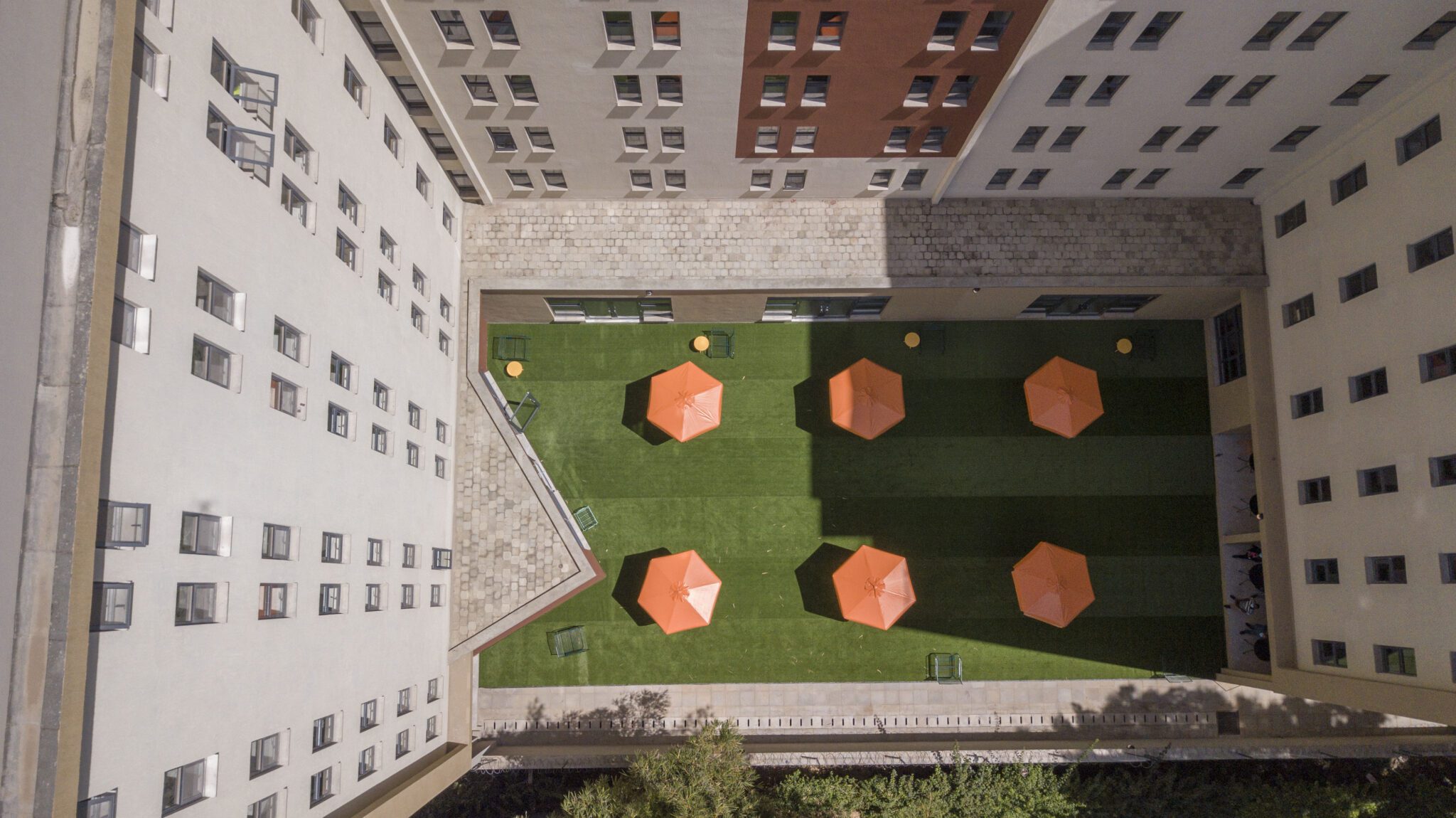
Tuesday, 12th August 2025

By InAfrika Reporter
Dodoma’s 6,000-hectare campus was always a wager: could a new university, born in 2007, expand fast enough to absorb the nation’s ambitions and do it without dissolving into bigness for its own sake? The University of Dodoma (UDOM) has spent the past 18 years learning to make size feel like service—colleges that function as cities, labs that tie theory to road and clinic, and a student body that, at full stride, will approach 50,000.
The present tense is crowded. UDOM runs seven colleges—from Earth Sciences and Natural & Mathematical Sciences to Informatics & Virtual Education, Education, Humanities & Social Sciences, Health & Allied Sciences, and Business Studies & Law—with the College of Education alone enrolling about 8,000. The system works when each unit feels big enough to matter and small enough to be managed; on most days, the campus hits that balance.
Scale is a means, not an end, and you can measure it in outcomes. In May–June 2025, Tanzania’s team won Grand Prize at the Huawei ICT Competition 2024/25, with UDOM’s Sigfrid Michael among the named champions—evidence that a public university in the capital can compete on a stage where the questions are algorithmic and the judges unforgiving. The headlines were celebratory; the implications are practical: a talent pipeline that is comfortable with global benchmarks.
Research, too, has found its legs. SCImago’s rankings place UDOM in the country’s upper tier on research performance; bibliometric studies tracking 2007–2022 show a maturing output and denser collaboration networks. Metrics are a blunt instrument, but they tell a story of capacity: labs that publish, supervisors who shepherd students to completion, and departments where “publish or perish” has been translated into Swahili and budgets.
The university’s ESIA filings and notices read like shopfloor documents of an institution that builds while teaching. Being the largest university in the region is not a billboard boast in those pages; it is a constraint to be managed—traffic, water, waste, and the logistics of a campus that can function like a small municipality. Dodoma’s centrality magnifies both risk and reach: a minister’s visit lands with one phone call; a broken pump inconveniences a small town’s worth of people. The reward is visibility, and the test is maintenance.
An honest portrait includes the frictions. Massification strains student services; an academic year will always have its disciplinary tremors; and the national debate about governance of teaching hospitals (and their place between ministries and universities) runs through UDOM’s health ecosystem like a persistent hum. The university has adapted by doubling down on directorates that act as institutional shock absorbers: Research, Publications and Consultancy to marshal grants and standards; ICT to keep a sprawling digital campus coherent; and deaneries that have learned to manage large cohorts without surrendering to anonymity.
If the campus had a single metaphor, it would be the Innovation & Digital push that now threads through programme lists and news tickers: incubators, hackathons, and formal links with the Tanzania ICT Commission. In June 2025, UDOM and the Commission launched a digital innovation centre aimed at turning student ingenuity into small companies and public tools; it’s the kind of bridge from classroom to market that makes a regional university feel national.
Numbers by themselves don’t teach, but they keep everyone honest. Public sources place current enrollment in the high tens of thousands, with acceptance rates and completion rates now entering public debate; third-party directories peg total students around ~29,000, though the university’s own target remains 50,000 at full build-out. More useful than any snapshot is the trend: a campus that has learned to absorb large cohorts with fewer administrative bottlenecks each year.
The lesson of UDOM’s first 18 years is that a university can be big and personal if it designs for it. Colleges act like cities; departments act like neighborhoods; faculty offices become the small rooms where futures are quietly redirected. In a country that needs teachers, nurses, coders, geologists, and policy analysts at once, the breadth that initially drew skepticism now looks like a hedge against narrowness. In graduation tents and convocation halls, that variety reads as ordinary—which is the point.
There are temptations to avoid. Bigness invites ceremony; donors reward ribbon-cutting. UDOM’s better habit has been to tuck its pride into outcomes: pass rates that rise because remedial math is taught with patience; a public-health field school that turns theory into clinics with charts on the wall; an informatics curriculum that weaves cloud and AI tools without pretending every student will become a startup founder. Reputation here grows slower than a press cycle and steadier than a social feed.
The university’s future will be decided less by new buildings than by small, durable improvements: lab kit that arrives on time and is maintained; libraries that get the journal subscriptions students actually read; transport that makes the far colleges feel near; and a culture that treats plagiarism and exam integrity as matters of honor, not bureaucracy. The rest follows: better grant hit rates; steadier industry partnerships; alumni who come back to hire.
If you stand on a Dodoma hillside at dusk, the campus looks like a city exhaling: lecture halls emptying, lights along the central spine switching on, a clinic still busy, a server room humming through another night. The wager of 2007 wasn’t only about size; it was about confidence—that Tanzania could build a university where a first-generation student learns to read a map of the future and believe it has room for them. Eighteen years later, the map is inked in: seven colleges, national-scale research, a fresh ribbon of innovation work, and a student body that keeps the capital honest about what higher education is for. That is not spectacle. That is a country quietly making itself.


